Part I: Introduction
Chapter 2: Key Perspectives
Nadine T. Fernandez and Katie Nelson
Learning Objectives
- Compare and contrast the primary goals of the different waves of feminism.
- Articulate how intersectionality helps explain inequalities.
- Analyze how colonialism and globalization have contributed to global inequalities of wealth and power.
If we want to learn about sex and gender from a global perspective, anthropology is a good place to start. This book examines sex and gender through a few particular perspectives or lenses within anthropology. These “lenses” frame how each chapter approaches the study of gender in a particular place and helps us understand why and how certain gendered practices came to be. This chapter outlines the main perspectives in this book, namely: feminism, intersectionality, and globalization. These are all complex terms with long histories, but here we’ll try to give just enough background explanation so that you can contextualize the chapters in the book and identify the threads and themes that connect them.
Feminism
Anthropology did not escape the gender ideologies of the time and place where the discipline first started. It was shaped by its “founding fathers”—Franz Boas, Bronislaw Malinowski, Alfred Kroeber, among others—in the late 1800s to early 1900s, about the same time the first wave of the feminist movement was fighting for women’s right to vote. Despite the early involvement of women in anthropology such as Margaret Mead and Zora Neale Hurston, the contributions of many of its founding “mothers” were dismissed or overlooked. The dominant male perspective shaped much of what early anthropologists studied and how they communicated their findings. In fact, it wasn’t until the second wave of the feminist movement, namely the women’s rights movements of the 1960s and 1970s, that anthropologists started to ask some key questions. And it was feminist anthropologists who were some of the first researchers to ask how social constructions of sex and gender vary cross-culturally. Why were they interested in knowing the answer to this question? These feminist anthropologists reasoned that if gender roles and statuses are different in different places and times, then it means that there is nothing “natural” about the gender inequalities in our own culture: they are culturally constructed.
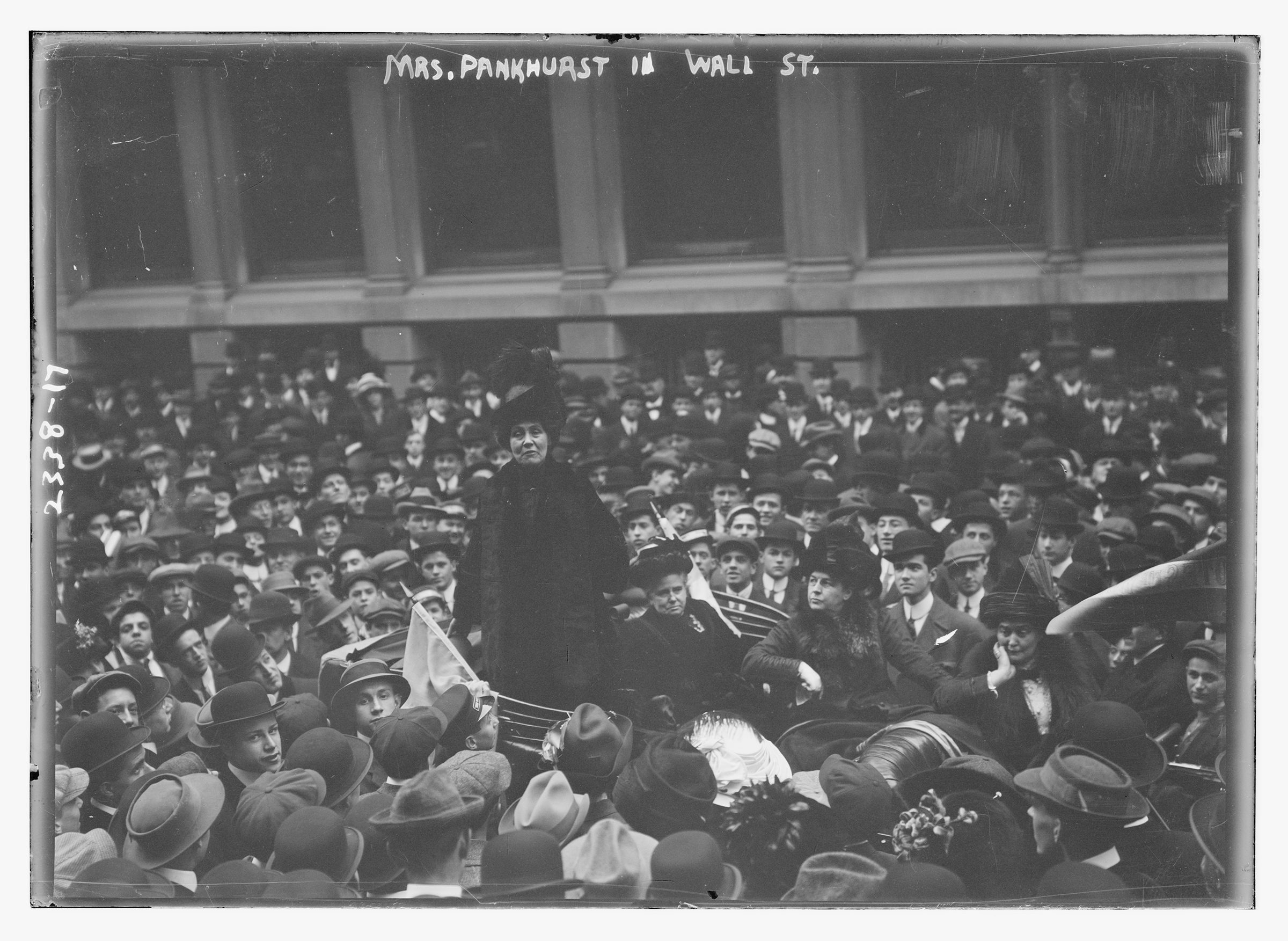
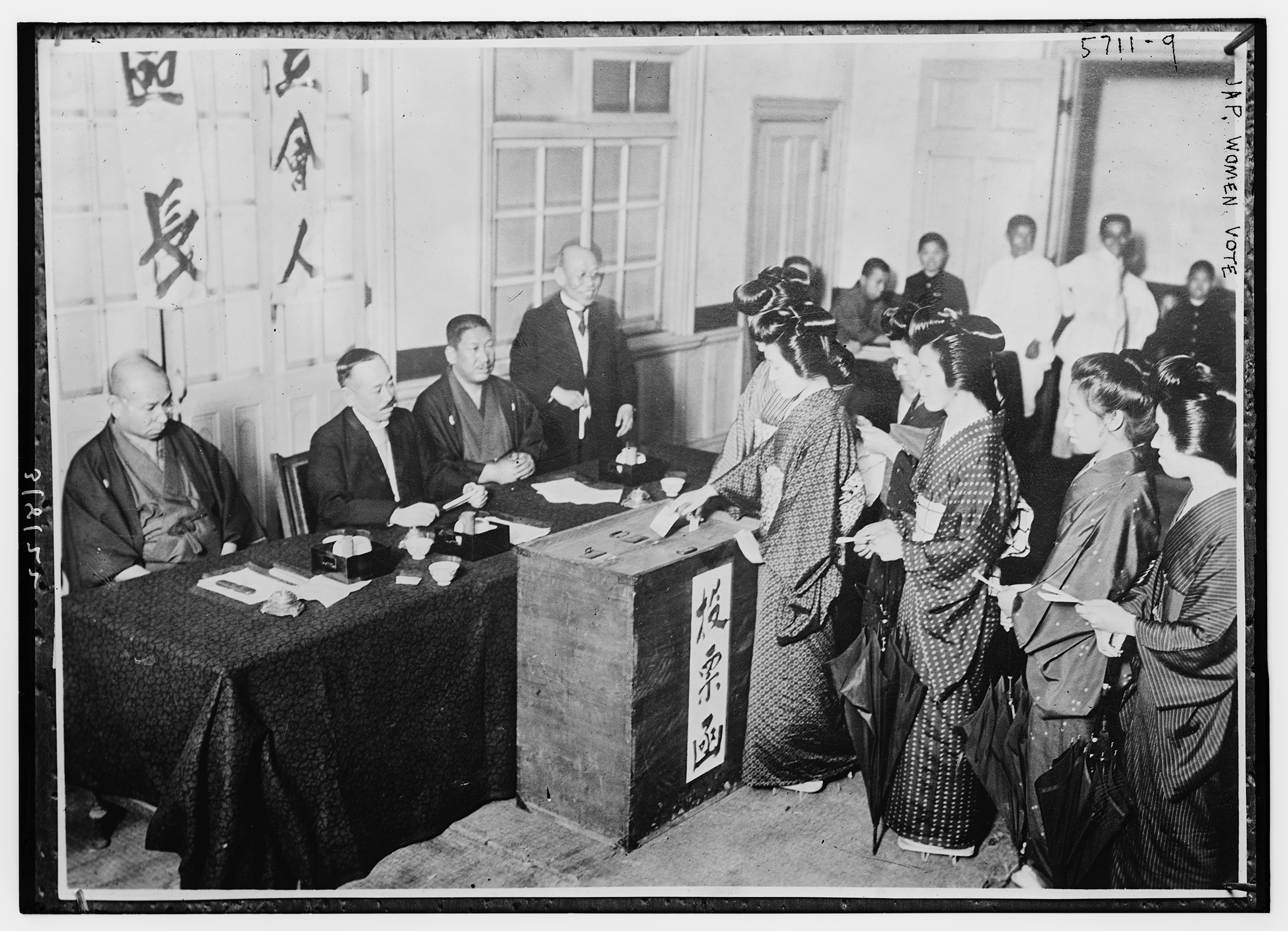
Since feminism is a concept we will be encountering in some of this book’s chapters, let’s lay out a working definition before we embark. We take the following definition from Estelle Freedman’s book, No Turning Back: The History of Feminism and the Future of Women. Freedman defines feminism as follows: “Feminism is a belief that women and men are inherently of equal worth. Because most societies privilege men as a group, social movements are necessary to achieve equality between women and men, with the understanding that gender always intersects with other social hierarchies” (Freedman, 2002).
Freedman continues with some clarifications of the terms in her definition. She uses the term equal worth to emphasize that we need to value traditionally female tasks (e.g., child rearing) as highly as the types of work usually done by men. She is not saying men and women are the same, or that they have to be the same, but rather that men’s and women’s labor should be valued equally. By men being privileged in most societies, she is referring not only to formal legal and political rights but also to cultural preferences and double standards that give men more freedoms and opportunities than women. Finally, by pointing out that gender always “intersects” with other “social hierarchies,” she is referring to the ways in which the experience of being a woman is fundamentally influenced by other social structures such as class, race, age, sexuality, etc. Perhaps most importantly, Freedman is not arguing that there is a universal identity as “woman” that in and of itself communicates something about the experiences of all women in the world. She recognizes that women experience their lives very differently in different cultural and historical contexts.
Early feminist ideas, like the 1970s concept of a “global sisterhood,” were criticized by feminists of color, such as Audre Lorde, for overlooking the multiple forms of oppression faced by women of color and women in the Global South (Schrock 2013). There are other social inequalities that disadvantage both men and women, and feminism cannot ignore those other systems of power and inequality—like poverty, racism, and homophobia. In her definition of feminism Freedman addresses the issues raised in the third wave of the feminist movement, namely that second-wave feminism had focused too heavily on the experiences of white, middle-class women and had failed to see how other social inequalities shape people’s lives. The concept of feminism has changed over time and has, at times, been given a bad name because it is often oversimplified and misunderstood. However, when presented as Freedman does, it becomes a stance that both men and women can embrace.
Table 2.1. Waves of feminism
| Waves of Feminism | Characteristics |
|---|---|
| First wave | Began in late 1800’s and focused on the fight for political incorporation of women, primarily the right to vote. |
| Second wave | 1960’s-1980’s, addressed issues of equal legal and social rights for women. Its emblematic slogan was “the personal is political.” Pushed for, but failed to have the ERA (Equal Rights Amendment) added to the US Constitution. Critiqued for primarily focusing on the concerns of white, middle to upper-class women in the Global North. |
| Third wave | Began in the 1990s responding to the shortcomings of the second wave, namely that it focused on the experiences of upper middle-class white women. This wave is rooted in the idea of women’s lives as intersectional, highlighting how race, ethnicity, class, religion, gender, and nationality are all significant factors when discussing feminism. |
| Fourth wave | Began about 2008 and has focused on sexual harassment, body shaming, and rape culture and, in part, is defined by the use of technology. Fourth-wave feminist activism takes place in the streets, but it is planned and spread online through social media campaigns like the #MeToo movement. Fourth-wave feminism recognizes and celebrates the wide variety of “feminisms” that exist around the world and continues to carry forward ideas of intersectionality. |
As a movement, feminism continues to evolve and grow. We are now in what has been called the fourth wave of feminism, which began in about 2008. This wave has focused on sexual harassment, body shaming, and rape culture and, in part, is defined by the use of technology. Fourth-wave feminist activism takes place in the streets, but it is planned and spread online through social media campaigns like the #MeToo movement. Fourth-wave feminism recognizes and celebrates the wide variety of “feminisms” that exist around the world and continues to carry forward ideas of intersectionality. Now, let’s take a closer look at intersectionality, which is also central to this book.
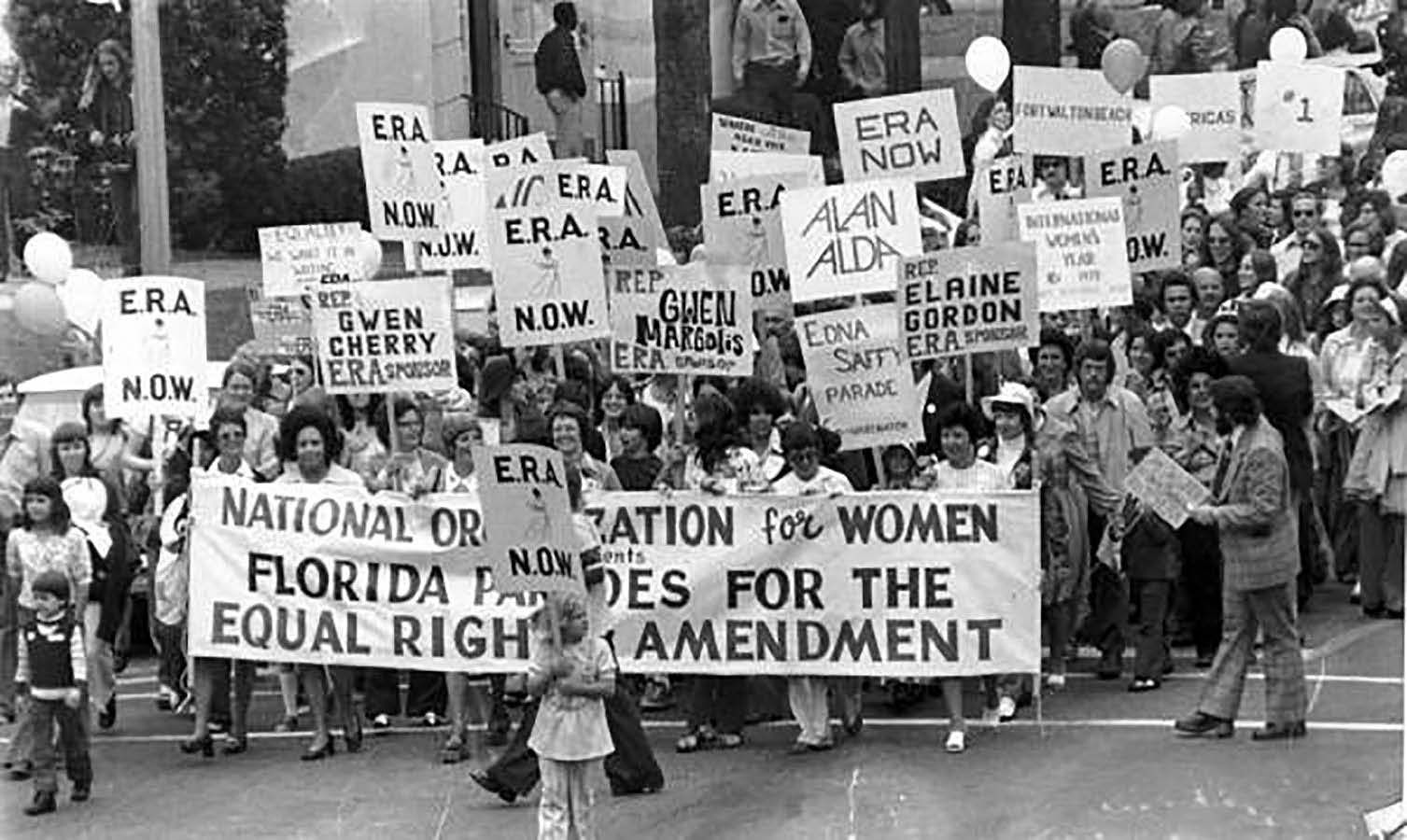
Intersectionality
A key idea that grew out of the third-wave feminist movement—and out of feminist analyses of how gender and race are socially constructed—is intersectionality. Using an intersectional lens allows us to appreciate the ways different social structures and aspects of our identities intersect in different ways for different people. For example, intersectionality allows us to understand how a person’s identity and life experiences are shaped by racism, sexism, class, and homophobia (among other categories of difference). At the “inter-section” of various social forces we experience ways of being and moving about the world that differ from another person whose intersectionality may be distinct from our own. Intersectionality also examines how interlocking systems of power affect the most marginalized people in a society. From an intersectional perspective, multiple forms of discrimination combine and transform the experience of oppression. The purpose of using an intersectional lens is to understand how overlapping categories of identity change in combination with each other and how they impact individuals and institutions. The framework of intersectionality is essential to studying relations of privilege and power in efforts to promote social and political equity.
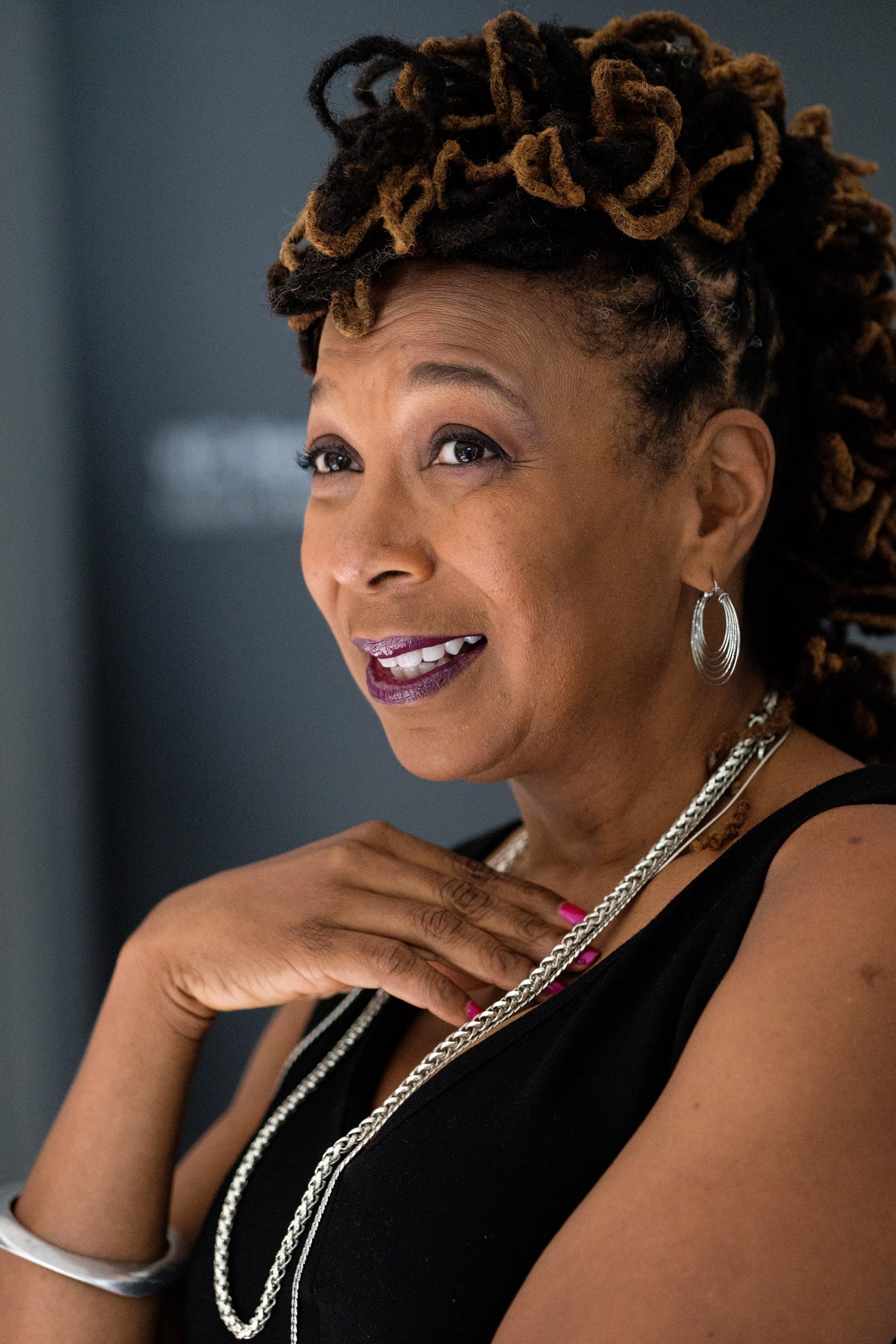
The theory of intersectionality was first articulated by Kimberlé Crenshaw, a lawyer and critical race theorist who was trying to understand how antidiscrimination law could fail to account for the way in which a Black woman might be discriminated against (Crenshaw 1989). She developed the analogy of an “inter-section,” where racism and sexism meet, to help us understand and see the ways in which multiple aspects of our identities—and multiple social forces that helped to shape those identities—could impact us. Crenshaw invented the term intersectionality in 1989, and it was adopted in the years that followed by feminist and feminist anthropologists. In 2016 Crenshaw delivered a TED talk entitled, “The Urgency of Intersectionality.” More than thirty years later, the idea of intersectionality is still an urgent one.
EXPLORE: Review Crenshaw’s TED talk to get a better understanding of exactly what this term, “intersectionality,” means, where it came from, and why it is still important today.
EXPLORE: Peter Hopkins, Newcastle University, 2018, April 22. “What Is Intersectionality?” https://vimeo.com/263719865.
The chapters in this book are grounded in feminist anthropology and as such they examine gendered lives of men and women intersectionally and situate them in their local contexts. The results are culturally contextualized analyses that are often rooted in the concerns of the people who are being studied. Feminist anthropologists like Chandra Mohanty assert that women’s experiences across the globe are diverse and argue for studies that are context-specific and historically situated (Schrock 2013). In this book, we embrace this challenge by focusing not only on intersectionality but also on the concept of globalization as a way to understand both the cultural specificity and the historical global connections shaping the gendered experiences explored in each chapter. Let’s take a closer look at globalization and the history of colonialism that tied much of the world together centuries ago.
Colonialism, Globalization, and Gender
Inequality among cultural groups, societies, and nations is not a new phenomenon: it has roots in the development of agriculture and a sedentary lifestyle starting ten thousand years ago. Yet the reasons why these inequalities persist have troubled social scientists for decades. In his book Guns, Germs, and Steel, Jared Diamond puts forward an excellent argument for why some countries were rich and others were poor prior to 1492 (when Columbus first arrived in the Americas). Europeans, he argues, had many advantages over people in the Americas that allowed them to conquer the Aztec and Incan empires, for example. By the early 1500s the Europeans had domesticated horses, and they possessed guns and steel swords, ocean-going ships, large-scale political organizations, and phonetic writing systems, as well as having resistance to several deadly epidemic diseases. In short, guns, germs, and steel gave them key advantages over the Indigenous groups they encountered (Diamond 1999).
Europeans had these advantages, not because of genetic superiority but rather due to their fortuitous geographic location. The Eurasian landmass was home to most of the large mammals that could be domesticated and used in the grain harvesting process. This meant that six thousand years ago, the Eurasians were using large draft animals to power their plows, providing more calories and fueling population growth. The large landmass also allowed for ideas to circulate across cultures, like between Europe, North Africa, and China, bringing innovations that fostered the development of more complex and stratified societies. With these advantages, Spain, Great Britain, Portugal, and other European countries set off on an age of exploration to see what they could learn about and acquire from the New World. However, while this history helps explain why Europeans were able to launch an age of exploration to other continents, it does little to help us understand why some countries are rich and others poor after over five hundred years of global trade. The history and legacy of colonialism give us more insight into these persistent inequalities.
As Europeans colonized the world, they transformed societies that were growing food for their own subsistence into exporters of cash crops for European consumption. Europeans used their military might to capture lands and then levied taxes or created large plantations that forced locals to produce export crops like sugar, coffee, cocoa, and tobacco. They also put colonized peoples to work in dangerous mines, extracting precious metals such as gold and silver. Foods, plants, and diseases spread throughout the world, along with ideas, values, technologies, money, and commodities. Over centuries, a global world economic system emerged in which the wealth and profits earned in the Global North depended on the cheap labor, raw materials, and lack of development in the Global South (see chapter 15, “The Global North—Introducing the Region,” for more on sociologist Immanuel Wallerstein’s world systems theory).
The slave trade was perhaps the most profound example of this world system in action. Due to the decimation of Indigenous Americans by European diseases, there was ample land for Europeans to settle but not enough labor. Meanwhile, Africans, by virtue of sharing the same continuous landmass with Europeans, had already built up a resistance to European diseases and had a few of their own, like malaria and dengue fever, that made Africa difficult for Europeans to conquer and settle. So instead of settling Africa, Europeans traded with the more powerful African nations, like the West African Dahomey Kingdom (present-day Benin). The most notable “commodity” they traded was people: enslaved Africans. A total of twelve million enslaved people were brought to the Americas to work in the vast sugar, cotton, and tobacco plantations.
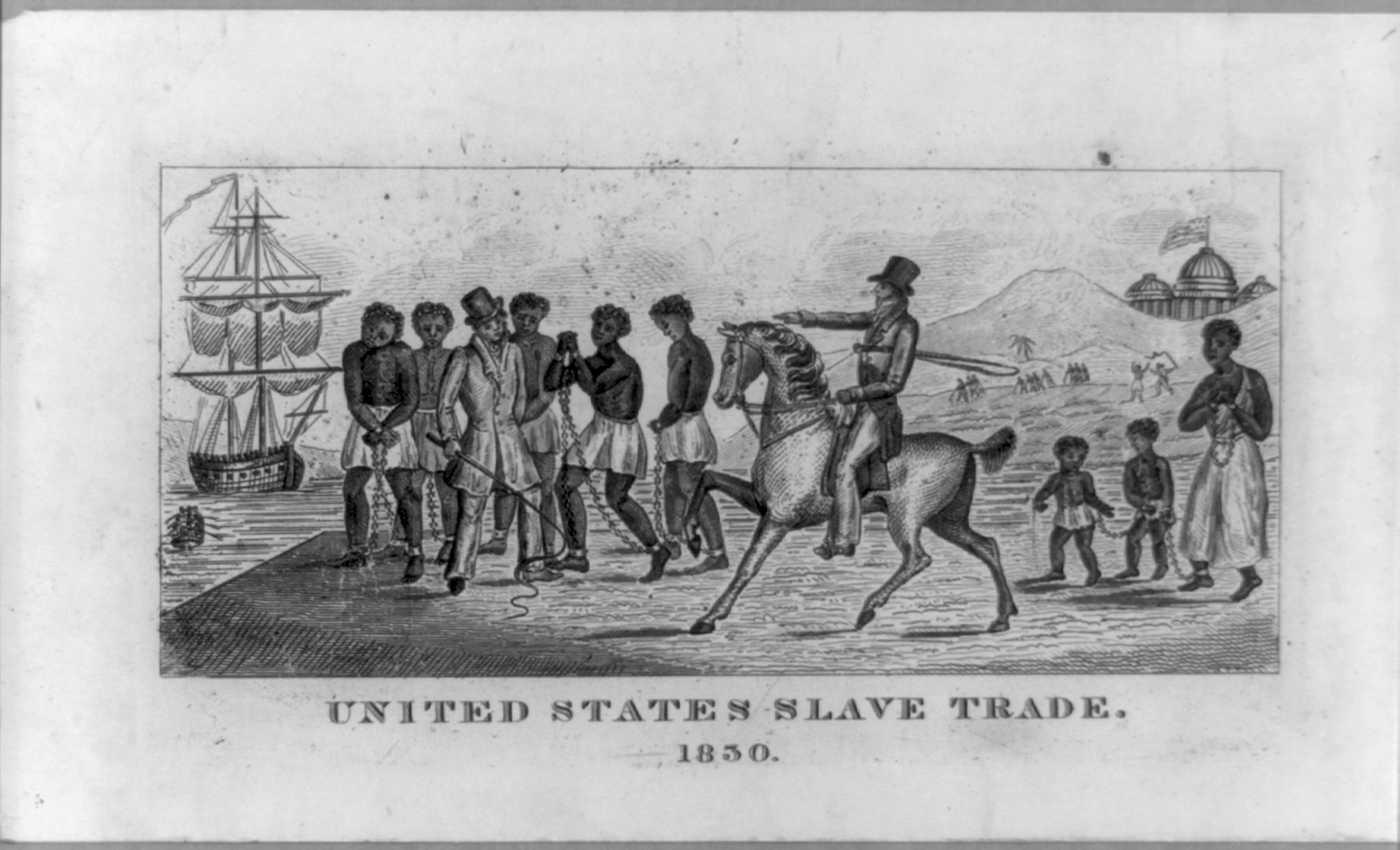
In the plantation system, the colonizers amassed fabulous levels of wealth. The growing wealth set the stage for the Industrial Revolution in Britain, which only elevated the need for raw materials, while also increasing the European’s capacity to conquer and rule new lands. Remote regions of Africa and the Amazon that had been impenetrable and difficult for Europeans to settle started to come under European control behind the onslaught of machine guns and armaments shuttled in on a growing network of train tracks.
By the late 1800s, the European powers were engaged in the “scramble for Africa,” strategically colonizing every bit of land, laying down train tracks that would slowly drain Africa of its natural resources in rubber, copper, and other precious materials. As had occurred in the Americas and Asia, local subsistence farmers in Africa were forced to transform their production to serve the global market. Northern Ghana shifted production from nutritious yams to cocoa. Liberia produced rubber; Nigeria, palm oil; Tanzania, sisal; and Uganda, cotton. All of them became dependent on global trade for their subsistence. Even after former colonies in Asia, the Americas, and Africa gained independence in the 1960s and 1970s, exploitative economic relationships with the Global North continued. The example in the box below captures this ongoing dynamic of global economic inequality that is the legacy of colonialism.
Structural Power: A Story of Rich and Poor
[Adapted from Michael Wesch, Kansas State University, anth101.com/book]
Let’s look at two communities on opposite ends of a world system today. Rüschlikon, a small village in Switzerland, received over 360 million dollars in tax revenue from a single resident, Ivan Glasenberg, in 2011. That amounts to $72,000 for each of the village’s five thousand residents. It is one of the richest communities in the world. Glasenberg is the CEO of Glencore, one of the most powerful companies in the world, specializing in mining and commodities. If we follow the commodity chain back to its source, we find copper mines like the Mopani copper mine in Zambia, where 60 percent of people live on less than $1 per day, the residents struggle to find adequate food and health care, education is difficult to attain, and the air and water are frequently polluted by the mines. The Gross Domestic Product (GDP) per capita in Switzerland is the highest in the world at just over $75,000. Zambia is among the lowest at under $2,000. In fact, Glencore’s revenues alone are ten times the entire GDP of Zambia.
Over a ten-year period in the early 2000s, $29 billion dollars’ worth of copper was extracted from Zambia, yet Zambia only collected $50 million per year in taxes while spending over $150 million a year to provide electricity for the mines. Zambia was actually losing money on their own resources. How did this happen?
During the “scramble for Africa” the region was proclaimed a British Sphere of Influence administered by Cecil Rhodes and named “Rhodesia.” When copper was discovered, it became one of the world’s largest exporters of copper; but the wealth did little to improve the lives of Africans. By the time Zambia gained independence in 1964, they were rich in resources but lacked the knowledge and capital to mine those resources. Nonetheless, they successfully operated the mines under national control for over a decade, and their economy grew on their copper profits. By the mid-1970s, they were one of the most prosperous countries in sub-Saharan Africa. But their entire economy depended on that single commodity, and in the 1970s, the price of copper dropped dramatically as Russia flooded the market with it. Like many other countries that depend on exports of natural resources, their economy collapsed along with the prices.
The Zambian economy was in crisis and had to look to the International Monetary Fund and World Bank for big loans. But soon they could not keep up with their loan payments. Like other developing countries, the loans that were supposed to save them became crippling. For every $1 they were receiving in aid from rich countries, they were spending $10 on loan interest. By the year 2000, with copper prices falling again, Zambia was in crisis and could not receive any more loans. The copper mines were privatized and sold to companies like Glencore. They were trapped in a system that left them no more options. They wanted to demand a higher price for their copper, but their impoverished neighboring countries would just undersell them.
Over the next decade, the cost of copper soared, and Glencore made massive profits. But the lives of Zambians did not improve because none of that money found its way into Zambia. As a large multinational corporation, Glencore was able to avoid paying taxes in Zambia through a practice called “transfer pricing.” Glencore is made up of several smaller subsidiary companies. Their Zambian subsidiaries sell the copper very cheaply to their subsidiaries in Switzerland, which has very low taxes on copper exports. Then the Swiss company marks up the price to its true market value and sells the copper. On paper, Switzerland is the largest importer of Zambian copper (60 percent) and one of the world’s largest exporters of copper, yet very little of this copper ever actually arrives in (and then leaves) Switzerland. This little accounting trick is in part why copper accounts for 71 percent of the exports from Zambia, but only contributes 0.2 percent to their GDP.
This is obviously unfair, but Zambia does not have the financial resources to fight Glencore’s army of lawyers. This is just one more chapter in a long history that consistently places Zambia on the weaker end of power. At the dawn of colonization, they faced the military might of the British and lacked the power to defend their land. They entered at the bottom of an emerging global economy and have never had the resources to educate their public and prepare them for success. They now find themselves trapped in cycles of poverty. Without a strong tax base, they cannot fund powerful institutions that could raise health and education standards to create jobs that could diversify the economy.
Colonialism and ongoing globalization have had a gendered impact as well. That is, men and women have been affected differently by colonialism and global capitalism. For example, among the Taureg in Algeria, women had an active role in tribal politics, could own property, and had a respected status as poets in their society. Their position was in stark contrast to many of their Arab neighbors, but the growing influence of Islamo-Arab cultures in the region has diminished women’s positions in society (Keenan 2003). Colonialism eroded the status of many Native American women. For example among the matrilineal Cherokee, the Council of Women had significant power including the right to declare war. As a result the British disparagingly referred to them as a “petticoat government” and took measures to undermine their authority (Strickland n.d.). US officials also instituted a “patriarchal colonialism” that destroyed the social foundations and the more egalitarian gender relations of many native peoples (Guerro 2003).
In more recent times, globalization has resulted in the increased flows of people and things across the globe. These mobilities can take many forms, from labor migrations, to refugee flows, to travel and tourism, to elite expatriate communities. Here, too, we see how gender, as a fundamental social relation, shapes these phenomena. Scholars have noted a “feminization of migration” as women move around the world to work in domestic service, childcare, large-scale agriculture, and in factories (Hondagneu-Sotelo 2003). Through constructions of femininity, multinational corporations see them as a docile and cheap workforce, well suited for repetitive, detailed tasks required on global assembly lines. Migration can reconfigure gender relations between men and women. Migrant women may gain status through jobs and new social networks, while men may lose power in both the public and domestic spheres if they suffer unemployment and discrimination in the new country (Hondagneu-Sotelo 2003). Ideas of masculinity and fatherhood are also influenced by migration, as we see in chapter 19, as migrant fathers struggle to remake their role by parenting at a distance.
Global movements and migrations are tied to work but also to pleasure. With the tourism industry, a global sex trade has developed involving both men and women. Eroticized and exoticized ideas of men and women in the Global South play into the fantasies of foreign tourists both for pleasure (Cabezas 2009; Frohlick 2012) and as potential spouses (Constable 2003). Many in the Global South who engage in sexual relations with tourists dream of migrating through marriage to a foreigner (Fernandez 2019). However, often these relationships do not provide the hoped-for outcome, and mail-order brides do not always get the marriages they envisioned (Faier 2007). Global mobilities are intertwined for both work and leisure, and the impact these global movements have on individuals are shaped by factors such as gender, class, nationality, and race.
A gendered, intersectional analysis helps us see the uneven impact globalization has had on people around the world. Globalization provides many benefits to societies including the spread of technology, longer life expectancies, and shared cultural innovations. However, it can also be a source of vulnerability. For instance, the COVID-19 crisis is an example of a global phenomenon that has laid bare the intense interdependence of global economies and societies. Starting in December 2019, a novel coronavirus that causes the deadly COVID-19 disease began to spread throughout the world. The resulting pandemic halted global and local economies and disrupted globalized supply chains. The crisis led to hundreds of thousands of deaths and is expected to markedly change local and global societies, cultural norms, and economies in ways that are yet to be fully appreciated.
Early gendered analyses of the crisis in the United States suggest that shifts in gender roles may be one such result. Jobs that tend to be predominantly held by women (grocery retail workers, nurses, childcare workers) were the ones that were deemed as “essential” early on in the crisis. As a result, heterosexual couples experienced swift role reversals with men providing more childcare and domestic work and women laboring outside the home under often stressful and dangerous conditions. However, as the crisis continued women began to lose their jobs in greater numbers than men, underscoring the inherent vulnerability and inequity of women’s labor and income (Institute for Women’s Policy Research 2020). Furthermore, for many women around the world the home confinement has increased tensions and has led to a surge in domestic violence: with few support resources operating during the crisis, victims have few options for help. The gendered impact of COVID-19 is shaped by the availability of women’s resources. Those who usually have adequate or even abundant resources may lack their former access to reproductive health services, while those with the fewest resources may be particularly vulnerable to the virus itself and may be struggling just to keep their families fed.
Conclusion
In this chapter we introduced the key perspectives that unite the chapters in this book: feminism(s), intersectionality, and globalization. We explored how feminism has evolved over time and provided anthropology with essential insights into gender diversity and inequality. The following sections, chapters, and profiles will introduce you to the experiences of men, women, and third-gendered people across the globe. The threads that connect them are intersectional analyses and a focus on globalization that links the local to an economic system that spans the globe. We can best understand the practices and cultures we will read about by focusing on how they are connected in the world system and how individual experiences within that culture are shaped by their context-specific position (race, class, gender, age, etc.). From this vantage point, we can see how our own gendered lives, practices, and patterns of consumption are connected to those people we will be reading about.
- Compare and contrast the four primary waves of feminism.
- How does intersectionality help us understand social inequalities?
- How do colonialism and globalization contribute to the ongoing global inequalities of wealth and power today?
- Discuss some positive and negative impacts globalization has had on your own life.
Key Terms
first-wave feminism—started in the late 1800s and early 1900s and was focused on women’s right to vote.
fourth-wave feminism—began around 2012 to address sexual harassment, body shaming, and rape culture, among other issues. It is characterized by a focus on the global empowerment of women, the greater inclusion of diverse perspectives and voices, and the use of social media in activism.
Global North—does not refer to a geographic region in any traditional sense but rather to the relative power and wealth of countries in distinct parts of the world. The Global North encompasses the rich and powerful regions such as North America, Europe, and Australia.
Global South—does not refer to a geographic region in any traditional sense but rather to the relative power and wealth of countries in distinct parts of the world. The Global South encompasses the poor and less powerful countries in areas such as Latin America, Africa, and Asia.
intersectionality—refers to the interconnected nature of social categories such as race, class, and gender that create overlapping systems of discrimination or disadvantage. The goal of an intersectional analysis is to understand how racism, sexism, and homophobia (for example) interact together to impact our identities and how we live in our society.
mobilities—the movement of people, things, and ideas, and the social implications of those movements. Mobilities scholars explore topics such as human migration, tourism, and transportation, and the forces that promote or constrain movement.
second-wave feminism—1960s–1980s addressed issues of equal legal and social rights for women. Its emblematic slogan was “the personal is political.”
third-wave feminism—began in the 1990s responding to the shortcomings of the Second Wave, namely that it focused on the experiences of upper-middle-class white women. Third Wave feminism is rooted in the idea of women’s lives as intersectional, highlighting how race, ethnicity, class, religion, gender, and nationality are all significant factors when discussing feminism.
Resources for Further Exploration
- Feminism is for Everybody (Pluto, 2000) by bell hooks presents a straightforward explanation of key ideas and concepts in feminism.
- Iron Jawed Angels (2003) a film on Alice Paul and the women’s suffrage movement in the United States.
- National Public Radio (NPR)—Planet Money story that followed the making of a single T-shirt in 2013: https://apps.npr.org/tshirt/#/title
- National Public Radio (NPR)—“Goats and Soda: Stories of Life in a Changing World,” a program exploring health and development globally. There’s a whole section devoted to stories on women and girls from around the world: https://www.npr.org/sections/goatsandsoda/
- Sweetness and Power: The Place of Sugar in Modern History (1986) by anthropologist Sidney Wilfred Mintz (Penguin Press, 1986) presents a fascinating history of how sugar transformed from an elite luxury good to a staple in the working- class diet and what effect that shift had on the world.
- The Secret History of Wonder Woman (2015 Vintage ) by Jill Lepore recounts the history of the feminist movement in the United States and the evolution of this iconic superhero. There is also a much less inspiring 2017 film based loosely on the book, Professor Marston and the Wonder Women.
- The Story of Stuff Project (https://www.storyofstuff.org/about/) has created a number of award-winning short animated documentaries on the detrimental effects of our global consumption-based economy. Check out the movies under the “Learn” tab on their website.
- United Nations 17 Sustainable Development Goals (SDG) to reach by 2030. All countries have agreed to work toward these goals, and you can track their progress at: https://sdg-tracker.org/. For more statistical information across the globe also see: OurWorldinData.org.
- We Should All Be Feminists (Fourth Estate, 2014), a powerful short book by Chimamanda Ngozi Adichie. The acclaimed author also presents her ideas on feminism in a TED talk: https://www.ted.com/talks/chimamanda_ngozi_adichie_we_should_all_be_feminists?language=en.
- WIDE+ (Women in Development Europe+), a European feminist organization, has gathered articles on the gendered impact of the COVID-19 pandemic: https://wideplus.org/2020/03/26/covid-19-crisis-from-a-feminist-perspective-overview-of-different-articles-published/.
Bibliography
Cabezas, Amalia. 2009. Economies of Desire: Sex and Tourism in Cuba and the Dominican Republic. Philadelphia: Temple University Press.
Constable, Nicole. 2003. Romance on a Global Stage: Pen Pals, Virtual Ethnography, and “Mail-Order” Marriages. Berkeley: University of California Press.
Covey, R. Alan. 2013. “Inca Gender Relations, from Household to Empire.” In Gender in Cross-Cultural Perspective, 6th ed., 70–76. Boston: Pearson Education.
Crenshaw, Kimberlé. 1989. “Demarginalizing the Intersection of Race and Sex: A Black Feminist Critique of Antidiscrimination Doctrine, Feminist Theory and Antiracist Politics.” University of Chicago Legal Forum 1989, no. 8: https://chicagounbound.uchicago.edu/uclf/vol1989/iss1/8.
———. (2016, December 7). The Urgency of Intersectionality (video). https://youtu.be/akOe5-UsQ2o
Diamond, Jared M. 1999. Guns, Germs and Steel: The Fates of Human Societies. New York: W.W. Norton.
Ditch, E. 2006. Reconstructing Gender: A Multicultural Reader. New York: McGraw-Hill.
Faier, Lieba. 2007. Filipina Migrants in Rural Japan and Their Professions of Love. American Ethnologist 34, no. 1: 148–162.
Fernandez, Nadine T. 2019. “Tourist Brides and Migrant Grooms: Cuban–Danish Couples and Family Reunification Policies.” Journal of Ethnic and Migration Studies 45, no. 16: 3141–56. https://doi.org/10.1080/1369183X.2018.1547025.
Freedman, Estelle. 2002. No Turning Back: The History of Feminism and the Future of Women. New York: Ballantine.
Frohlick, Susan. 2012. Sexuality, Women, and Tourism: Cross-border Desires through Contemporary Travel. New York: Routledge.
Guerrero, M. A. Jaimes. 2003. “‘Patriarchal Colonialism’ and Indigenism: Implications for Native Feminist Spirituality and Native Womanism.” Hypatia 18, no. 2 (2003): 58–69. http://www.jstor.org/stable/3811011. Accessed May 8, 2020.
Hondagneu-Sotelo, Pierrette, ed. 2003. Gender and U.S. Immigration: Contemporary Trends. Berkeley: University of California Press.
Institute for Women’s Policy Research. 2020. “Women Lost More Jobs than Men in almost all Sectors of the Economy.” Quick Figures, April, 20120. IWRP #Q080. https://iwpr.org/wp-content/uploads/2020/04/QF-Jobs-Day-April-FINAL.pdf
Keenan, Jeremy. 2003. “The End of the Matriline? The Changing Roles of Women and Descent amongst the Algerian Tuareg.” Journal of North African Studies 8, nos. 3–4: 121–162. doi:10.1080/13629380308718519.
Schrock, Richelle D. 2013. “The Methodological Imperatives of Feminist Ethnography.” Journal of Feminist Scholarship 5 (Fall): 48–60. https://youtu.be/NpYlE_EjX9M
Steger, M. 2013. Globalization: A Very Short Introduction. Oxford: Oxford University Press.
Strickland, Rennard. n.d. “Cherokee (tribe).” The Encyclopedia of Oklahoma History and Culture. https://www.okhistory.org/publications/enc/entry.php?entry=CH014.
Credits
Some of the material in this chapter was authored by Deborah Amory and adapted from The Art of Being Human: A Textbook for Cultural Anthropology by Michael Wesch, Kansas State University, licensed under a Creative Commons Attribution-Noncommercial-Share Alike 4.0 License. anth101.com/book.
the tendency to view one’s own culture as most important and correct and as the yardstick by which to measure all other cultures.
from the late nineteenth through the early twentieth century, focusing on earning the right to vote and emancipation of women from fathers and husbands.
1960s–1980s addressed issues of equal legal and social rights for women. Its emblematic slogan was “the personal is political.”
does not refer to a geographic region in any traditional sense but rather to the relative power and wealth of countries in distinct parts of the world. The Global South encompasses the poor and less powerful countries in areas such as Latin America, Africa, and Asia.
began in the 1990s responding to the shortcomings of the Second Wave, namely that it focused on the experiences of upper-middle-class white women. Third Wave feminism is rooted in the idea of women’s lives as intersectional, highlighting how race, ethnicity, class, religion, gender, and nationality are all significant factors when discussing feminism.
began around 2012 to address sexual harassment, body shaming, and rape culture, among other issues. It is characterized by a focus on the global empowerment of women, the greater inclusion of diverse perspectives and voices, and the use of social media in activism.
does not refer to a geographic region in any traditional sense but rather to the relative power and wealth of countries in distinct parts of the world. The Global North encompasses the rich and powerful regions such as North America, Europe, and Australia.
the movement of people, things, and ideas, and the social implications of those movements. Mobilities scholars explore topics such as human migration, tourism, and transportation, and the forces that promote or constrain movement.



